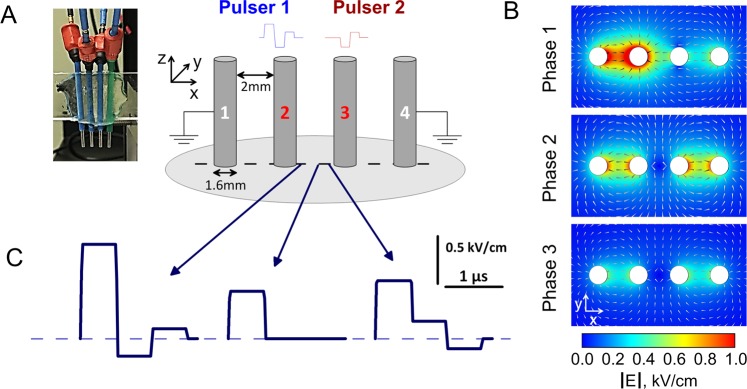Figure 2.
Linear electrode array for testing CANCAN stimulation paradigm. (A) a photo and a schematic of the array, which consists of 4 hollow electrodes (1.6-mm outer diameter, 2 mm separation). The electrodes pierce agarose gel containing seeded cells (gray oval, not to scale). Two central electrodes deliver synchronized bipolar stimulating pulses (600 ns each phase). Pulse to electrode 3 is delayed by one phase (“phase-shifted” delivery) and copies phases 2 and 3 of the pulse at electrode 2, as in Fig. 1B. (B) Electric field in the gel in the XY plane (perpendicular to the electrodes) during 3 phases of the pulse. Note cancellation of the electric field in the center of the array during the 2nd and 3rd phases when electrodes 2 and 3 are equipotential. (C) Superposition of the bipolar pulses yields a unipolar pulse in the center of the gap between electrodes 2 and 3 and complex waveforms in the proximity of the electrodes (see Fig. 3 for more detail). Simulations for panels (B,C) assumed the amplitude of 200, 140, and 80 V for pulse phases 1–3, respectively (100/70/40% ratio).

